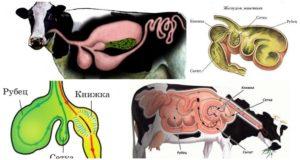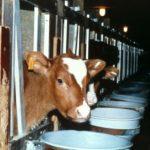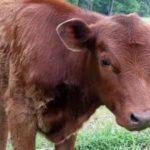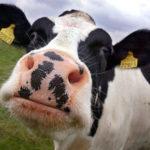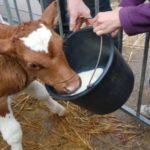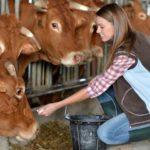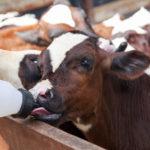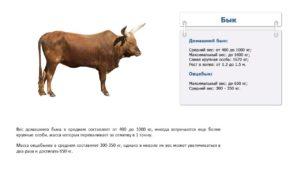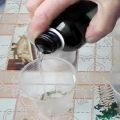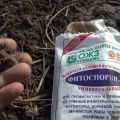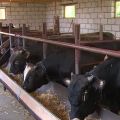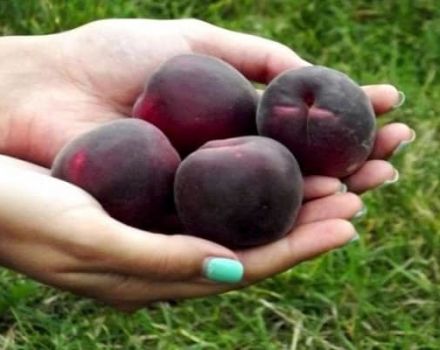Using electrolytes for calves and how to do it yourself at home
Rehydration solutions are used to replenish tissues with fluid following loss from diarrhea. Electrolyte solutions in animal husbandry are used in the complex treatment of calves and adult animals. Consider the types of electrolytes for calves, the rules for their use, contraindications, how to make a solution at home with your own hands.
Diarrhea remedies
Diarrhea in young calves is one of the leading causes of death and economic damage in animal husbandry. With diarrhea, salts, important for life processes, are removed from the body of animals, along with the liquid. Dehydration sets in. This is a dangerous condition for the animal; if the mineral and water balance is severely disturbed, the calf may die. You can restore the water-salt balance using a saline solution. For calves, you can use human medications that you can buy at the pharmacy. These are "Regidron", "Polysorb" and others.
Products with electrolytes are divided into 2 types:
- solutions for dairy calves;
- preparations in powder, from which a solution can be prepared by diluting it in water (used for calves that eat adult food).
The types of funds differ only in consistency.
What are they used for?
It is necessary to feed calves with salt solutions in case of diarrhea caused by feeding with milk substitutes, due to the transition to feed for adult animals, due to stress during vaccination, transportation, and changes in conditions of detention.
The solution also helps with diarrhea with infectious diseases. Cold, dampness, drafts, crowding, and dirty bedding can also cause diarrhea. During the treatment of infections, calves should receive not only electrolytes, but also medications that fight against pathogenic microflora. Usually these are antibiotics "Tetracycline" and "Levomycetin".
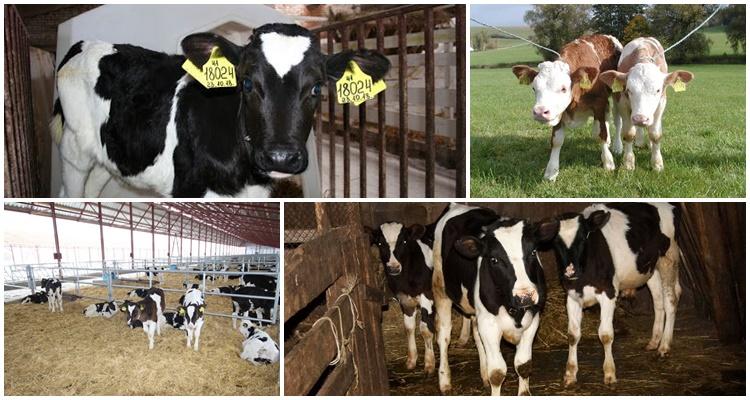
With diarrhea, calves lose weight quickly as a result of water loss. Without treatment, against the background of diarrhea, calves may die from acidosis, hyperkalemia, hypoglycemia, sepsis, hypothermia. Drinking electrolyte liquid solves this problem. It is necessary to monitor their condition and, if symptoms appear, immediately treat them. Dehydration can be determined by behavior, activity, how the calf behaves - stands or lies more, by the elasticity of the skin.
In electrolytes, different ingredients have different functions:
- sodium enhances the absorption of water, which restores the amount of extracellular fluid;
- glucose provides energy, maintains an active state and also enhances water absorption;
- glycine promotes the absorption of fluids, sodium and simple carbohydrates;
- alkalinizing agents reduce metabolic acidosis;
- potassium chloride replenishes systemic electrolytes;
- alkaline agents that normalize the acid-base composition of the blood.
The ratio of sodium, potassium, chlorine in saline and glucose maintains the osmotic pressure at normal levels.
Some preparations contain thickeners that give them the desired consistency, and useful microflora, which normalizes the digestive tract. The composition includes vitamins, lactic acid bacteria, flavorings. Electrolyte solutions should be given to calves at the first sign of dehydration, as well as for prophylaxis when transporting calves to another place of residence (it is recommended to skip the first 2 milk feeds and, instead of milk, give the animals a saline solution).
Application rules
The equipment for drinking electrolyte solutions (buckets, bottles, probes, nipples) must be clean and disinfected. It is recommended that each calf has its own container from which to drink. If the calf can drink on its own, the solution is injected into the stomach. With severe dehydration, the solution is administered intravenously.
Calves do not like the taste of ready-made electrolyte solutions because of the alkaline components. Therefore, do not wait for the animals to drink everything on their own, it is easier to start drinking by pouring liquid into the mouth from a bottle. At home, it is important to observe the dosage and volume norms when preparing the product. The lack of salts, like their excess, equally negatively affect the animal's body.

Before making a solution, you need to determine the degree of dehydration. You can find out by the symptoms:
- 5-6% - no clinical signs other than diarrhea. Calf is mobile, normal sucking reflex.
- 6-8% - the animal moves little, is depressed, the sucking reflex is weak, the skin smoothing after pinching occurs within 2-6 seconds.
- 8-10% - the calf almost does not move, lies a lot, the eyes are dull, the gums are pale and dry, the skin is smoothed for more than 6 seconds.
- 10-12% - the animal does not get up, the skin does not smooth out, the legs are cold, there may be loss of consciousness.
After determining the percentage of dehydration, divide it by 100, then multiply by the weight of the animal in kg. The resulting number is the volume of electrolyte solution to be prepared and given to the calf along with milk. In this case, milk and solution should be taken equally. How to feed a calf:
- solution only, without milk during the entire period of therapy;
- in the first 2 days give electrolytes, 3 days - together with milk 1 to 1, on the last day only milk;
- give milk and solution in full, but alternate.
In practice, it has been established that giving up milk does not justify itself, since, in addition to salts, calves need nutrients and glucose, which gives energy. There is little glucose in electrolyte preparations, because of this, solutions cannot provide animals with the necessary amount of energy. Milk or milk substitute contains proteins and carbohydrates that have energy value.
To make your own products, you need to store the powder or liquid correctly. Preparations should be kept in a cool, dry place, in sealed containers, so that the powder does not accumulate moisture and does not cake.
If it is not possible to prepare a solution from the drug, it can be made from available means. It must be remembered that sugar cannot be substituted for glucose, since it is not absorbed in the cattle organism. Sucrose not only will not be beneficial, but can also harm: diarrhea and dehydration of the body will intensify. A sample recipe for a saline solution that you can make at home:
- 1 tbsp. l. salt;
- 1 tbsp. l. soda;
- 1 tbsp. l. fruit pectin or flax seed powder (for an enveloping effect);
- 1 tbsp. l. potassium carbonate;
- 1 tbsp. l. glucose or honey.
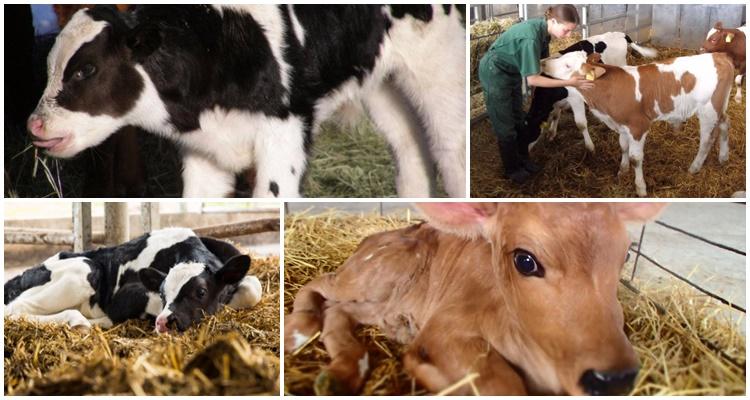
To normalize the intestinal microflora, lactobacilli and bifidobacteria can be added to the saline solution. Stir the components in 2 liters of clean water at room temperature. Water can be replaced with serum, fresh hay infusion, a weak decoction of oak bark. Or infusions of medicinal herbs: horse sorrel, chicory, plantain, nettle, yarrow.
Are there any contraindications and side effects?
Electrolyte products have no contraindications and no side effects. This applies to industrial preparations and prepared by hand. A small overdose is not dangerous, much more dangerous if, with an incorrect dosage or an error in volume, an insufficient amount of salts enter the calf's body. In this case, dehydration and diarrhea will not stop, and the problem will not be solved.
Analogs
Many electrolyte preparations are produced by the pharmaceutical industry. In addition to "Regidron" and Polisorb, "Normohydron", "Maratonik", "Orasan", "Smecta", "Zosterin", "Lactofiltrum", "Enterosgel", "Alfasorb", "Enterodes", "Pepidol" , "Naltrexon", "Enterumin" and others.
Electrolyte solutions are a necessary means to restore the water-salt balance in the body of calves with diarrhea caused by various reasons. The use of salts is extremely necessary, without them the animal may die. The effectiveness of electrolyte therapy depends on the composition of the drugs, the concentration of active particles, dosage and drinking regimen.
